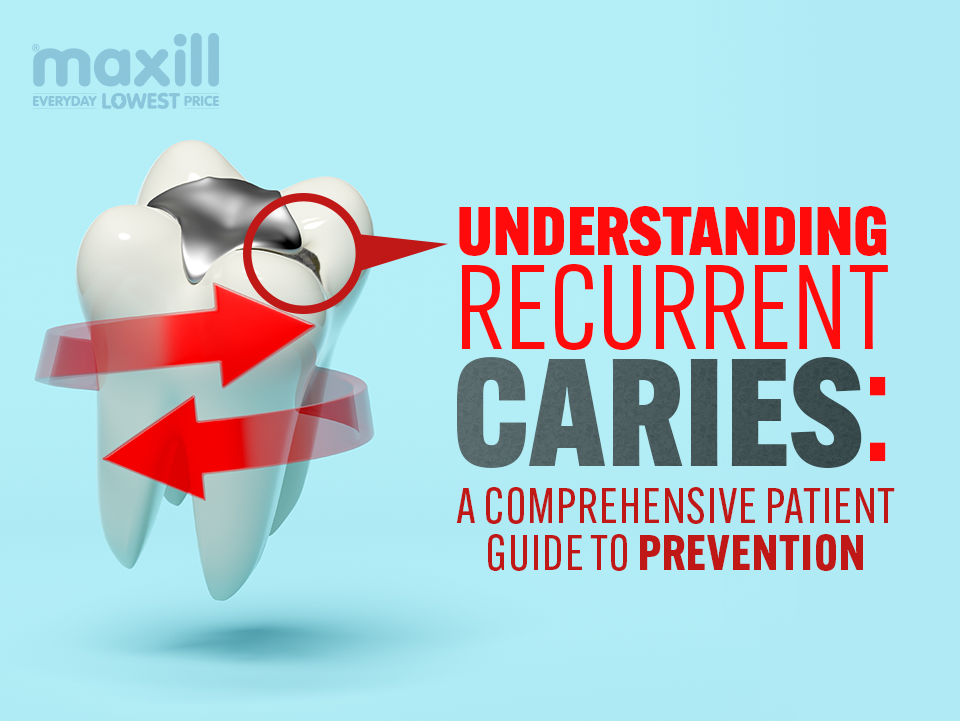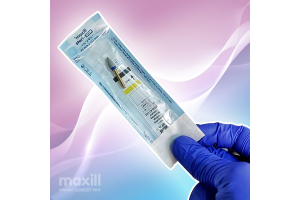Understanding Recurrent Caries: A Comprehensive Patient Guide to Prevention

Dental caries, commonly known as cavities, pose a significant threat to oral health. Dental fillings, while essential in treating cavities and restoring tooth structure, are not immune to the potential risk of recurrent caries. The process of recurrent caries around fillings involves a series of factors that compromise the integrity of the restoration, leading to subsequent decay. Understanding this process is crucial for both dental professionals and patients in implementing effective preventive measures.
How Does a Cavity Form Under an Existing Restoration?
To gain a comprehensive understanding of the factors contributing to recurrent caries around dental fillings, let us explore the intricate dynamics involved in this process. Five key elements play a crucial role in the development of recurrent caries, shedding light on the vulnerabilities that may compromise the integrity of dental restorations.
Marginal Breakdown
One of the primary pathways for recurrent caries around dental fillings is through marginal breakdown. Over time, the interface between the filling material and the natural tooth may experience micro gaps or imperfections. These tiny openings create opportunities for bacteria and plaque to infiltrate, initiating a new cycle of decay. Marginal breakdown is often accelerated by factors such as constant pressure from chewing, temperature fluctuations, and the natural wear and tear of daily oral functions.
Leakage and Microleakage
Dental fillings, although carefully placed, may not always form a perfect seal with the tooth. This imperfection can result in what is known as “microleakage”. Microleakage occurs when there are minute gaps between the filling material and the tooth structure, allowing bacteria and acids to seep in. This continuous leakage undermines the protective barrier established by the filling, fostering an environment conducive to recurrent caries development.
Secondary Decay Formation
As bacteria find their way into the microscopic gaps around dental fillings, they begin to produce acids as a byproduct of metabolizing sugars from the diet. These acids create an acidic environment that erodes tooth enamel and compromise the surrounding tooth structure. Over time, this process leads to the formation of secondary decay adjacent to the filling. If left undetected and untreated, secondary decay can progress, jeopardizing the longevity of the dental restoration.
Inadequate Oral Hygiene
Poor oral hygiene practices play a significant role in the recurrence of caries around dental fillings. Neglecting proper brushing and flossing allows plaque to accumulate around the margins of the filling. This plaque buildup not only contributes to the breakdown of the filling’s integrity but also provides a breeding ground for harmful bacteria. Regular and thorough oral hygiene is crucial in preventing the initiation and progression of recurrent caries in these vulnerable areas.
Material Degradation
The choice of filling material can impact the susceptibility to recurrent caries. Certain materials may degrade over time due to wear, corrosion, or chemical breakdown. As the filling material weakens, it becomes more prone to marginal breakdown and microleakage, facilitating the onset of recurrent caries. Regular assessment of the condition of dental fillings, especially those that have been in place for an extended period, is essential to identify signs of material degradation.
As we unravel the factors influencing recurrent caries around dental restorations, it becomes evident that proactive measures are essential in preserving your investment. Transitioning from understanding the challenges, let’s now explore the best practices for prevention patients can implement to ensure the longevity of dental restorations.
Best Practices for the Prevention of Recurrent Caries
In the quest for lasting oral health, implementing effective preventive measures is key. Exploring the following best practices, each playing a pivotal role in warding off recurrent caries and preserving the integrity of your dental restorations:
Regular Dental Check-ups
Regular dental check-ups play a pivotal role in preventing recurrent caries. Dentists can detect early signs of decay and deterioration in dental restorations during routine examinations. Additionally, professional cleanings help remove plaque and tartar minimizing the risk of recurrent caries development.
Optimal Oral Hygiene Practices
Maintaining optimal oral hygiene is fundamental in preventing recurrent caries. Proper brushing techniques, including the use of fluoride toothpaste or anti-cavity rinses, should be part of the daily routine. Flossing complements brushing by reaching areas between teeth that a toothbrush may miss, preventing the buildup of plaque and bacteria.
Fluoride Treatment
Fluoride, a natural mineral, has proven efficacy in preventing caries. Incorporating fluoride into daily oral care routines through toothpaste and mouth rinse can strengthen tooth enamel, making it more resistant to decay. Additionally, professional fluoride treatments, especially for individuals at higher risk, provide an extra layer of protection.
Patient Lifestyle, Diet, and Oral Hygiene
Looking into the complexities of oral health, we explore key factors in maintaining a cavity-free future. From dietary habits that impact caries development to lifestyle choices affecting overall well-being, and the comprehensive approach to preserving your dental health:
Dietary Habits
The role of diet in preventing recurrent caries cannot be overstated. Excessive consumption of sugary and acidic foods contributes significantly to the development of caries. Advising patients to maintain a balanced diet that limits sugar intake is essential for long-term oral health.
Lifestyle Factors
Beyond diet, lifestyle choices such as smoking and excessive alcohol consumption impact oral health. Smoking, in particular, is linked to a higher risk of recurrent caries. Encouraging patients that smoke to quit and moderate alcohol intake contributes not only to overall health but also to a lower likelihood of dental issues.
Oral Hygiene at Home
Effective oral hygiene at home is a cornerstone of caries prevention. Educating patients on the importance of consistent and proper brushing and flossing is crucial. Reinforcing these habits empowers individuals to take an active role in maintaining their oral health and preventing recurrent caries.
Wrap-up: Preserving Oral Health Through Understanding and Action
In conclusion, safeguarding against recurrent caries involves proactive measures both in the dental office and at home. Regular check-ups, optimal oral hygiene, fluoride treatments, and mindful lifestyle choices collectively defend against decay, preserving not only dental fillings but overall oral well-being.
As patients, embracing an integrated approach means understanding challenges and actively participating in prevention. From diet to lifestyle and diligent at-home care, each decision plays a crucial role in maintaining dental restoration longevity.
In the pursuit of a cavity-free future, let's stay vigilant and proactive. Fostering a partnership between dental professionals and patients works towards preserving not just smiles but the health of our teeth for years to come.
Remember, a commitment to prevention today ensures a brighter, healthier tomorrow for your precious smile.








